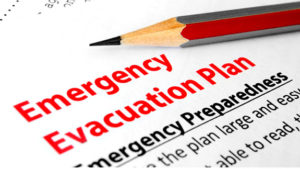
Have a plan to get your business through whatever may be ahead.
September is observed as National Preparedness Month, but preparing for disaster is really a year-round activity. A significant percentage of small businesses never fully recover from a disaster, according to the Federal Emergency Management Agency (FEMA). To maintain your business after a catastrophic event, it’s important to explore all the potential worst-case scenarios that may strike – and what actions you can take to minimize them.
While insurance coverage may reimburse you for lost income and expenses, planning ahead to continue operations with minimal interruption will help your business in the long term and reduce the likelihood of lost customers and broken contracts.
To keep your business – large or small – running under the stress of an emergency, work now to develop and implement a business continuity plan. There are several steps:
Analyze the hazards – Many business owners think of fire and windstorm as their most likely work-stop scenarios. But other potential perils – such as floods, earthquakes and winter storms – exist that may or may not be covered by insurance. A disaster need not be a large-scale event; any disruptive event can be a disaster if it impacts your operations. The first step in any planning activity is to identify the potential internal and external hazards that could affect your business.
Develop an action plan – Once you pinpoint the hazards, address them through a planning process that identifies recovery and continuity procedures. The planning process should be headed by a team and engage employees and supervisors at all levels of your organization.
Implement the plan – The best plans are adopted in writing, distributed to all associates and accompanied by a training process that allows everyone to know their roles after a disaster strikes. Practice regularly so that your new hires know the plan.
Evaluate and modify the plan – Businesses constantly evolve; disaster plans should, too. Revisit your business continuity plan regularly, testing and changing it depending upon your business’ changing risk exposures.
Encourage personal disaster planning – Don’t forget that disaster planning begins at home. After a widespread catastrophe, your employees will need to attend to their personal and family needs before they can begin to help with your business disaster recovery. Stay engaged with updates from FEMA and other entities to help promote personal family preparedness so your associates can develop their own plans in the event of a catastrophe. The American Red Cross also has disaster preparation information for families.
Seek additional resources – Two excellent resources to help get a business continuity plan off the ground include the Federal Emergency Management Agency (FEMA) and the Small Business Administration.
This loss control information is advisory only. The author assumes no responsibility for management or control of loss control activities. Not all exposures are identified in this article. Contact your local, independent insurance agent for coverage advice and policy service.
